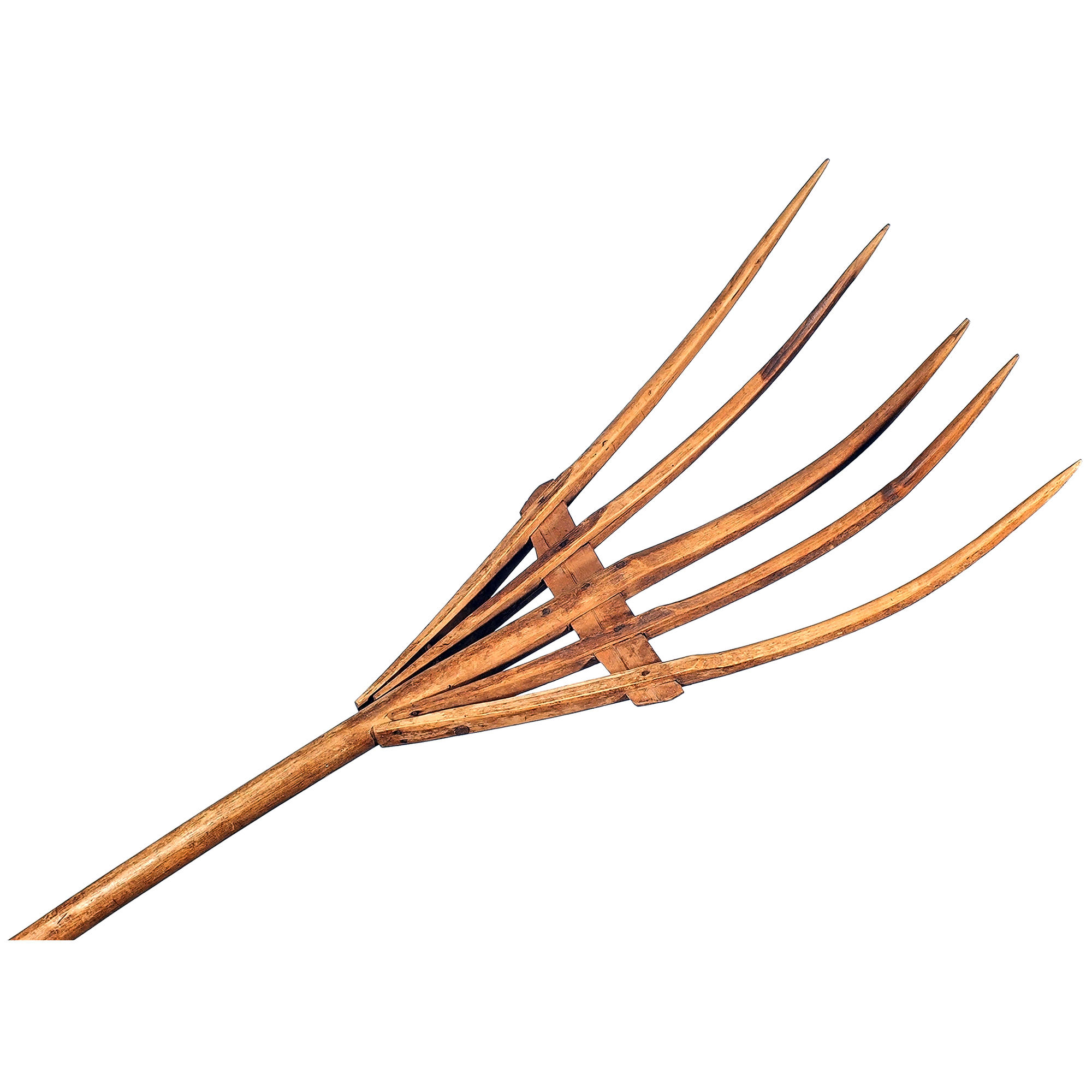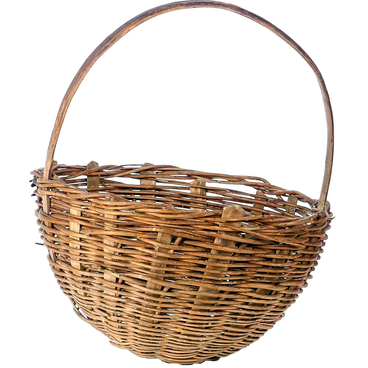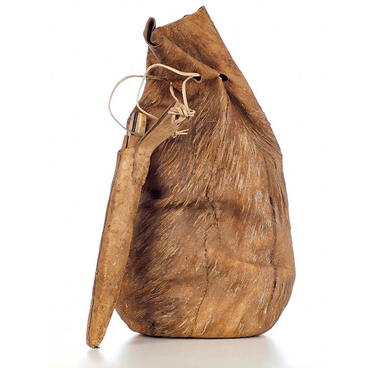In order to do good quality work in the field, the Adyghes used different implements the oldest and most universal of which was a wooden fork. Different forks were used for different agricultural purposes – a spading fork to dig the soil, and make beds, or loosen the ground after winter, a piercing fork to penetrate the ground and improve gas exchange in the soil, a hayfork to move hay, etc. Various types of forks differed from one another by specific features of the design.
The fork similar to the one presented in the museum was called by Adyghes ‘kuah’jo’. Usually they were made entirely of wood. A fork like that consisted of a staff, the length of which could exceed 1.5 meters, and of three to seven slightly curved teeth. The teeth were held together with a crossbar to distribute the load evenly and to prevent the instrument from bending, cracking and breaking when working.
The fork similar to the one presented in the museum was called by Adyghes ‘kuah’jo’. Usually they were made entirely of wood. A fork like that consisted of a staff, the length of which could exceed 1.5 meters, and of three to seven slightly curved teeth. The teeth were held together with a crossbar to distribute the load evenly and to prevent the instrument from bending, cracking and breaking when working.



